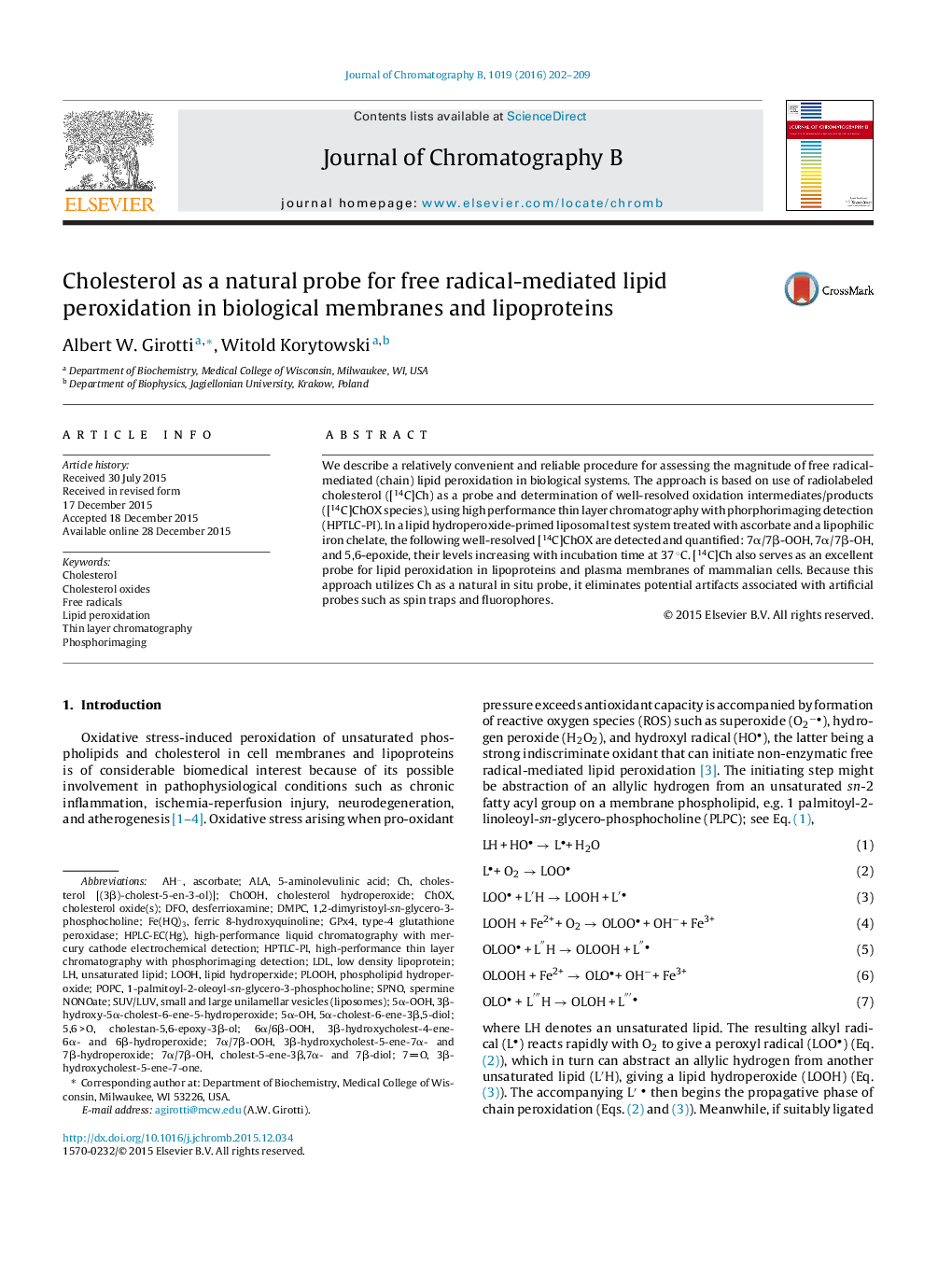| Article ID | Journal | Published Year | Pages | File Type |
|---|---|---|---|---|
| 1211900 | Journal of Chromatography B | 2016 | 8 Pages |
•[14C]Cholesterol can probe chain lipid peroxidation in membranes and lipoproteins.•Resulting [14C]ChOX can be analyzed by HPTLC with phosphor-imaging.•[14C]ChOX analysis is widely applicable for assessing lipid peroxidation.•Artifacts from exogenous probes (spin traps, fluorophores) are avoided.
We describe a relatively convenient and reliable procedure for assessing the magnitude of free radical-mediated (chain) lipid peroxidation in biological systems. The approach is based on use of radiolabeled cholesterol ([14C]Ch) as a probe and determination of well-resolved oxidation intermediates/products ([14C]ChOX species), using high performance thin layer chromatography with phorphorimaging detection (HPTLC-PI). In a lipid hydroperoxide-primed liposomal test system treated with ascorbate and a lipophilic iron chelate, the following well-resolved [14C]ChOX are detected and quantified: 7α/7β-OOH, 7α/7β-OH, and 5,6-epoxide, their levels increasing with incubation time at 37 °C. [14C]Ch also serves as an excellent probe for lipid peroxidation in lipoproteins and plasma membranes of mammalian cells. Because this approach utilizes Ch as a natural in situ probe, it eliminates potential artifacts associated with artificial probes such as spin traps and fluorophores.
